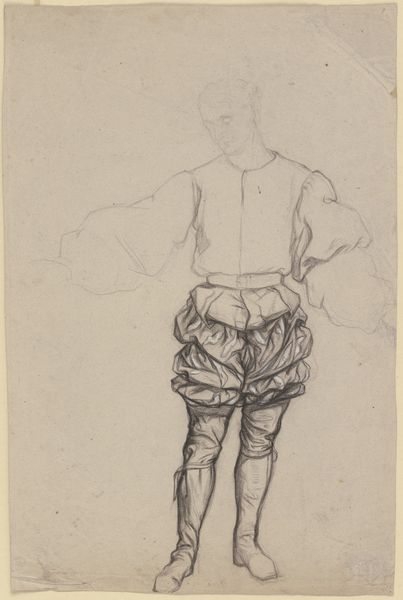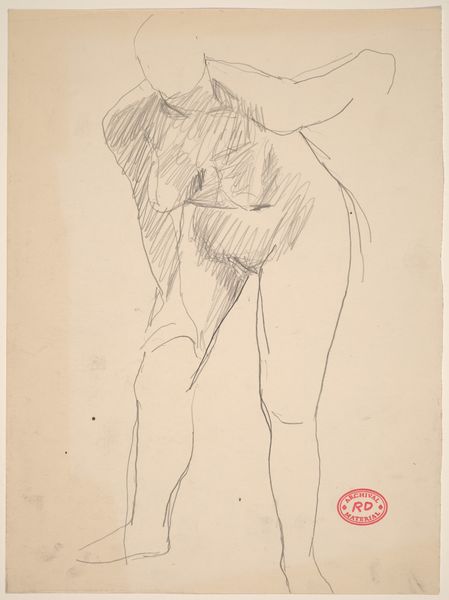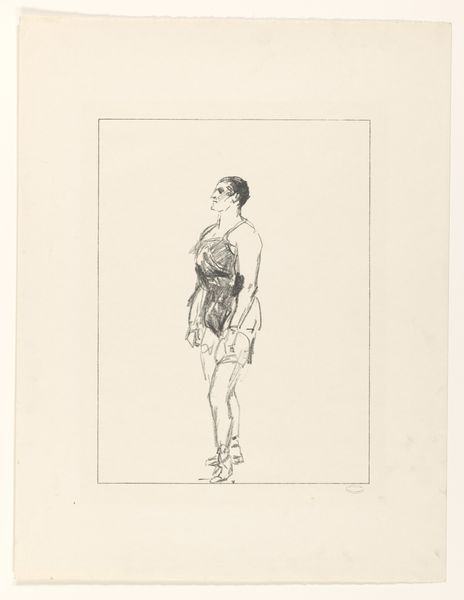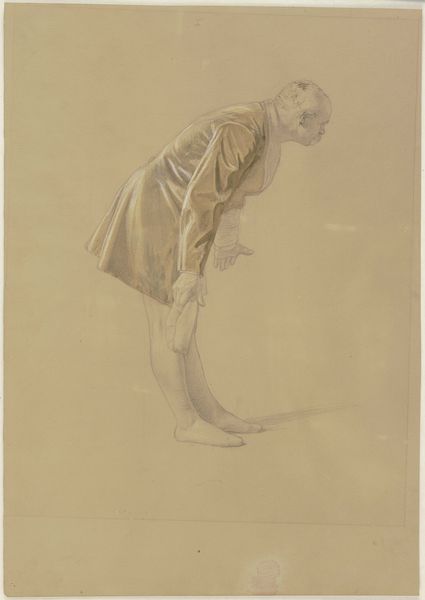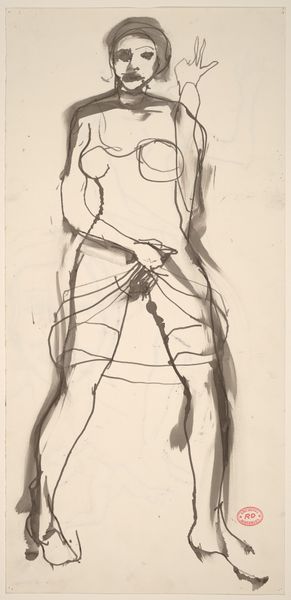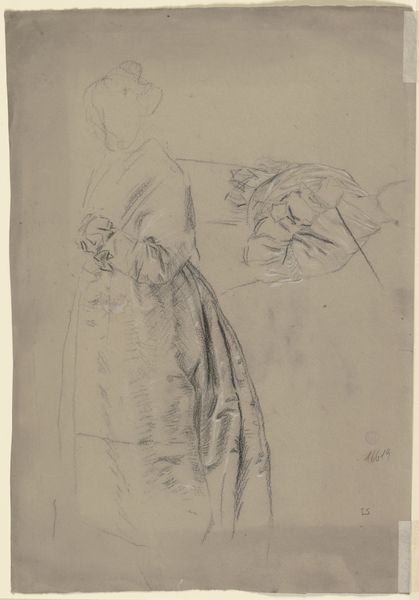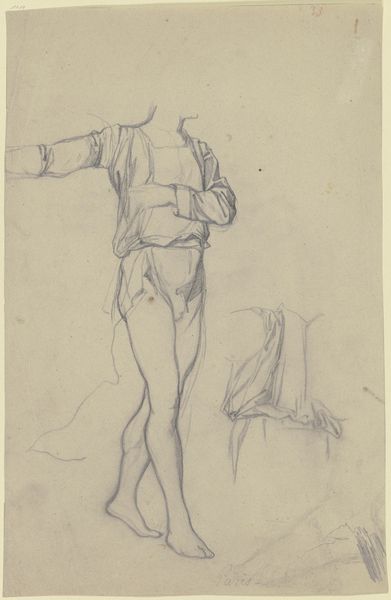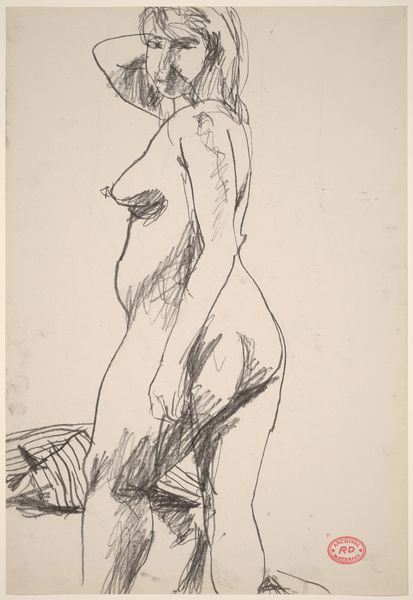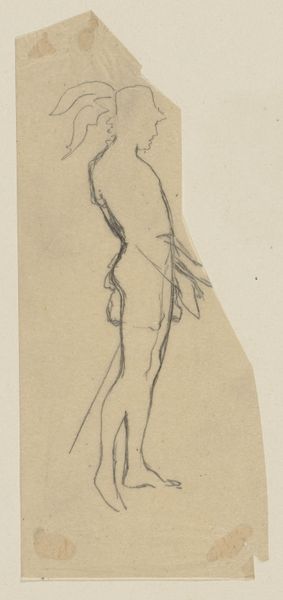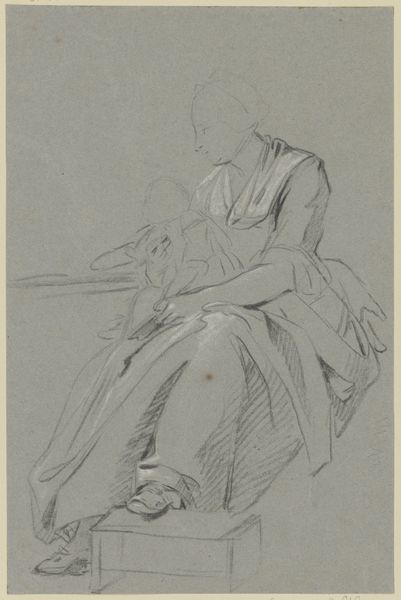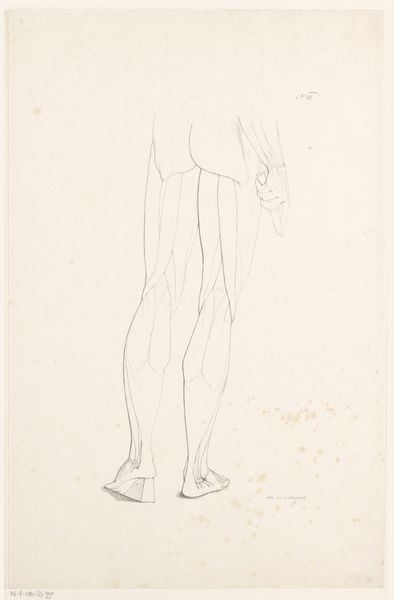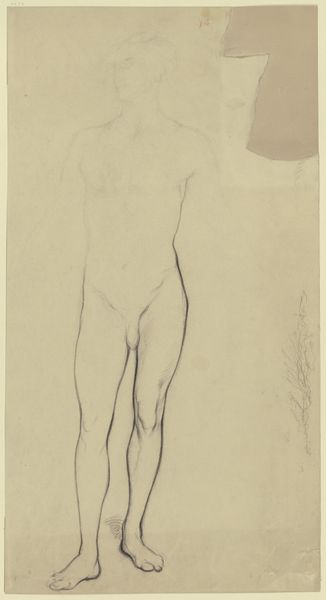
Copyright: Public Domain
Curator: This captivating drawing is "Horatio aus _Hamlet und Horatio_," created around 1868 by Victor Müller. It resides here at the Städel Museum. Drawn with pencil and chalk, the artist captures Horatio with elements of romanticism, almost as a sketchbook study of a figure, the character Horatio no doubt, costumed from Shakespeare’s “Hamlet.” Editor: There's a somber yet elegant feel, isn’t there? The grey paper really underscores the sense of incompleteness as a study. He appears stoic, posed in mid-motion or even contemplation? It suggests to me a quiet dignity amid potential turmoil, reflective perhaps of Hamlet’s own existential dilemma. Curator: That aligns well with the social context in which Müller was creating. Romanticism valued emotionality and the power of individual introspection, responding against the rigidity of societal norms. Victor Müller, known for genre painting and history painting, situated himself within mid-19th century German intellectual life, using Hamlet as source material. It reflects his involvement with the political symbolism inherent in the theatrical staging of the day. Editor: I find it intriguing to consider who was granted access to this characterization, and who decides which narratives about men take on an important place in culture. Was Müller positioning this specific portrayal of Hamlet’s loyal friend in conversation with any of the power dynamics of his moment? The unfinished composition suggests possibilities still in formation, not yet given their total position. Curator: The loose execution style reflects broader shifts occurring within artistic circles during that period. Academic art demanded highly finished and polished surfaces, whereas a younger generation of artists, with artists like Müller, gravitated towards sketches that highlight their working process and the energy of spontaneous creation. So this almost rejects a perfectness within that academic approach. It also makes a break towards looser forms. Editor: This certainly opens up several readings of not only the art's production but also our viewing experience. Perhaps what seems “unfinished” challenges our demand for full or total depictions—allowing space for nuance, mystery, for a figure who holds counsel. Curator: Absolutely. Studying "Horatio aus _Hamlet und Horatio_" deepens our awareness of not only art history itself, but of the political and social currents coursing through mid-19th century German life. Editor: It’s a reminder that even sketches of historical characters are not neutral; they're loaded with potential for reflection about identity, performativity, and historical narration.
Comments
No comments
Be the first to comment and join the conversation on the ultimate creative platform.

